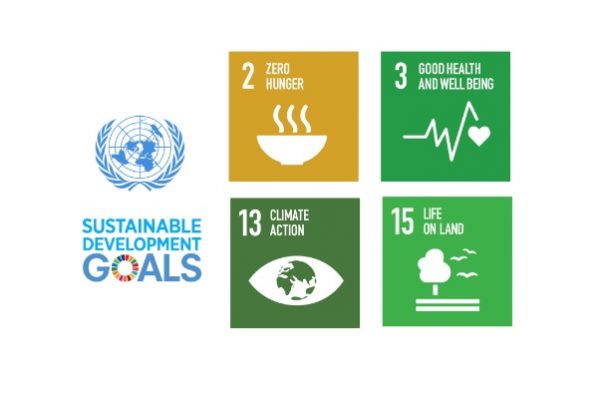When it comes to soil health, it’s often well-accepted that Sustainable Development Goals and innovative agricultural solutions could directly contribute to greater soil fertility and soil health. And, with climate change becoming ever more prominent, the agricultural industry faces severe backlash from the public to reduce emissions and achieve net-zero emissions.
However, while many are shifting toward Sustainable Development Goals as “yet another restriction” when times are already incredibly tough for farmers, this change could offer significant benefits in terms of farm profitability. Indeed, working towards Sustainable Development Goals could help reduce the need for fertilization and bolster the resilience of farmed soils significantly.
What are the Sustainable Development Goals
Climate change is rapidly becoming an ever-greater threat in our communities, leading to numerous potential complications and dangers. With this risk in mind, the United Nations General Assembly in 2015 accepted seventeen Sustainable Development Goals that would begin making a change for the better in terms of climate change.
Notably, Sustainable Development Goals aim to make a genuine difference in global warming overall. Notably, it is hoped that SDGs will be fully integrated and make a difference by 2030; as such, at this point, with just eight years left on the countdown, it’s certainly time to begin integrating Sustainable Development Goals from an on-farm perspective.

How Sustainable Development Goals Could Support Soil Health and Fertility
One of the most notable features of the SDGs is that they are directly related to soil health. Indeed, as Lal et al. (2021)explained, the SDGs aim to reach the goal of having 75% healthy soils by 2030 – and this could provide numerous potential benefits for on-farm productivity.
The goals that most closely relate to soil health and sustainable development goals include:
- Goal 2: Ending Hunger – In order to end hunger, superior food security will prove integral. However, improving soil health for greater productivity is vital since it directly influences around 95% of total food consumption.
- Goal 3: Good Health and Wellbeing – To increase health and wellbeing, increasing soil productivity for greater production of healthy and nutritious foods may be important. Moreover, since the soil determines a crop’s final nutrient level, promoting greater nutrient density in soils may prove valuable.
- Goal 13: Climate Action – As we have already outlined, promoting soil health to reduce inputs, minimize nutrient leaching and runoffs, and promote carbon sequestration is vital.
- Goal 15: Reducing Desertification of Soils: Unsurprisingly, Goal 15 of the Sustainable Development Goals – to reduce desertification and promote the restoration of degraded soils – is directly related to soil health. Soil health requires good soil structure, moisture, and mineral content; as such, ensuring that agricultural businesses integrate good soil health policies must be promoted extensively to achieve Sustainable Development Goals and minimize our impacts on the environment overall.
The above four goals, in particular, are directly related to the Sustainable Development Goals and overall efforts to reduce agriculture’s impact on the environment and the community while delivering high-quality, nutritious foods for both a local and broad consumer base.

What Constitutes Healthy Soils?
In many cases, modern productionist methodologies focus heavily on the fertilization of soils to achieve greater productivity and growth rates for crops, particularly with nitrogen-based fertilizers. However, there’s often very minimal consideration given to overall soil health, which may influence the sustainability of many modern, conventional farming practices.
Evaluating soil health is something that’s often subjective and depends on the overall goals. However, Liptzin et al. (2022)[1] found a strong correlation between soil organic carbon levels and overall soil health, including biological indicators such as the activity of microbes in the soil.
In addition to microbial activity, natural soil health is also indicated by the overall soil structure. Healthy soils should have a suitably thick layer of topsoil to support not only root structure and root health but also to ensure that runoff and nutrient leaching are reduced [2]. Moreover, unhealthy soils with a poor soil structure may be less effective for storing carbon from the atmosphere[3].
How Sustainable Development Goals Support Soil Health
Sustainable development goals are directly attributed to soil health, most notably soil microbiome and soil degradation.
In terms of soil microbiome and the overall diversity of soil health, Misra et al. (2017)[4] explain that “the diversity of soil microbiome affects the productivity and community dynamics via plant growth promotion, production and modification of phytohormones, and nutrient acquisition.” Moreover, while plants have a direct impact on their specific microbiome, creating healthier soil structures may help enhance crop growth. [5]
Sustainable development goals aim to promote overall soil fertility, and in turn, this can provide substantial benefits for both the climate change movement and farmers directly. The intricate complexities of soil directly influence overall crop production; furthermore, the concept of soil security also contributes to this, outlining the manageable properties of soil health and structure overall.
How Soil Testing Solutions Can Help Support SDGs
While it’s integral to focus on reducing carbon emissions from the agricultural industry, one of the simplest options is to embrace Sustainable Development Goals to contribute to climate change reduction. Nutrient availability and superior soil management will prove crucial for the overall achievement of sustainability goals, and so this may prove critical for individuals to consider.
However, in order for overall climate change targets to be met, the agricultural industry needs to also consider many other factors, such as crop storage and transport, water treatments, biodiversity management, and the like.
With ever-growing pressure to integrate Sustainable Development Goals in the agricultural industry, a growing number of agricultural producers are beginning to consider how these changes could bolster soil health. Indeed, in many cases, soil health can drastically improve thanks to making simple changes to offset the dangers of climate change, which is rapidly becoming more and more common. And, with the price of fertilization going through the roof these days, there’s rarely been a better time to get on board with sustainable development goals and begin making a difference on farms.
Would you like to learn more about AgroCares solutions? Please, contact our team!
info@agrocares.com
References
[1] https://www.sciencedirect.com/science/article/pii/S0038071722001651
[2] https://www.ncbi.nlm.nih.gov/pmc/articles/PMC7116140/
[3] https://www.sciencedirect.com/science/article/pii/S0167880918302548
[4] https://link.springer.com/chapter/10.1007/978-981-10-5708-3_14
[5] https://www.frontiersin.org/articles/10.3389/fsoil.2022.821589/full

